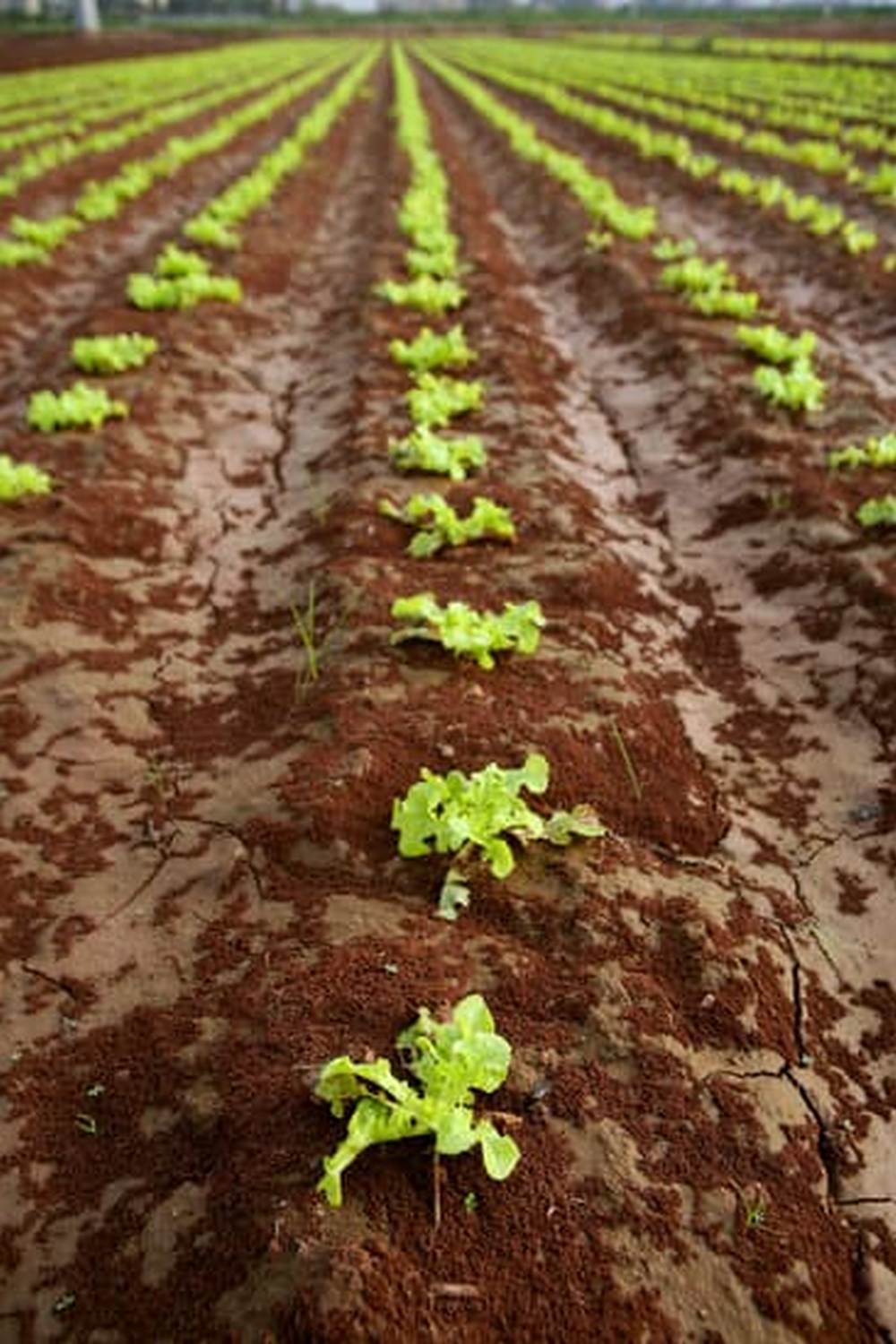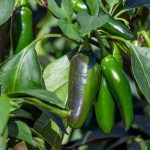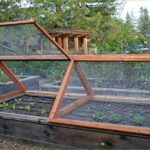Gardening Zone 10, also known as USDA hardiness zone 10, is a region that offers abundant opportunities for vegetable cultivation. This specific gardening zone encompasses areas with mild winters and year-long warm temperatures, making it an ideal environment for a wide variety of vegetables to thrive. In this article, we will explore the advantages of gardening in zone 10 and provide valuable information on how to achieve successful vegetable growth in this area.
When it comes to gardening, understanding your specific zone is crucial for optimal plant selection and cultivation. Gardening Zone 10 is characterized by its warm climate, with average annual minimum temperatures ranging from 30 to 40 degrees Fahrenheit (-1 to 4 degrees Celsius). This mild weather allows gardeners in this region to grow a diverse range of vegetables throughout the year.
One of the key benefits of gardening in zone 10 is the extended growing season. With a longer period of warmth and sunshine compared to other zones, gardeners have the luxury of enjoying fresh homegrown produce all year round. Additionally, vegetables grown in zone 10 often reach their full potential due to the favorable climate and soil conditions found in this region.
In the next sections of this article, we will dive deeper into the best vegetables suited for gardening zone 10, how to prepare the soil for optimal growth, choosing the right planting time and strategies, effective watering and irrigation practices, pest control measures, as well as tips for harvesting and storing your bountiful harvests. We will also address some potential challenges faced by gardeners in zone 10 and provide solutions to overcome them.
By following these guidelines and embracing the unique opportunities offered by gardening zone 10, you can enjoy a flourishing vegetable garden filled with delicious and nutritious produce year after year.
Best Vegetables to Grow in Gardening Zone 10
One of the key factors in achieving successful vegetable cultivation in gardening zone 10 is selecting the right types of vegetables that thrive in this specific climate and soil conditions. While many vegetables can be grown in zone 10, there are certain varieties that are better suited to the warm temperatures and long growing seasons experienced in this zone.
Tomatoes
Tomatoes are a staple in many gardens and they also happen to be well-suited for gardening zone 10. These heat-loving plants thrive in the warm temperatures and full sun conditions found in this zone. There are numerous tomato varieties to choose from, including cherry tomatoes, beefsteak tomatoes, and roma tomatoes, all of which can be successfully grown in zone 10.
Peppers
Another vegetable that excels in gardening zone 10 is peppers. Whether you prefer bell peppers, jalapenos, or spicy habaneros, these pepper plants will thrive in the warm weather of this zone. Peppers require full sun exposure and well-drained soil to grow successfully, making them an ideal choice for zone 10 gardens.
Zucchini and Squash
Zucchini and squash are both fast-growing vegetables that produce abundant harvests throughout the growing season, making them popular choices for gardeners in zone 10. These plants require a good amount of space to spread out and flourish, so make sure to give them plenty of room in your garden. Zucchini and squash vines do best with consistent watering and regular fertilization to support their rapid growth.
In addition to these popular choices, other vegetables that grow well in gardening zone 10 include cucumbers, green beans, eggplant, corn, sweet potatoes, and lettuce. By selecting these vegetables for your garden, you’ll increase your chances of a bountiful harvest that thrives under the specific conditions found within gardening zone 10.
Preparing the Soil
The Importance of Soil Preparation
Preparing the soil is a crucial step in ensuring optimal vegetable growth in gardening zone 10. The quality of the soil directly affects the health and productivity of your plants. By taking the time to properly prepare and amend the soil, you can create an ideal growing environment for your vegetables.
Soil Testing and Amendments
Before planting your vegetables, it is recommended to conduct a soil test in gardening zone 10. This will provide crucial information about the pH level, nutrient content, and overall health of your soil. Soil testing kits can be purchased at garden centers or through online retailers.
Based on the results of your soil test, you may need to make amendments to improve its fertility and structure. Common amendments include adding organic matter such as compost or well-rotted manure to enrich the soil with nutrients. Incorporating these organic materials into the soil will help improve drainage, water retention, and overall texture.
In addition to organic matter, you may need to adjust the pH level of your soil depending on the specific needs of your vegetables. Most vegetables prefer a slightly acidic to neutral pH range (around 6.0-7.0). If your soil is too acidic (low pH), adding pulverized limestone can help raise pH levels. Conversely, if your soil is too alkaline (high pH), incorporating sulfur or peat moss can help lower pH levels.
Fertilizing Your Vegetables
To ensure optimal vegetable growth in gardening zone 10, it is essential to provide adequate nutrients through fertilization. Before planting, apply a balanced fertilizer that contains nitrogen (N), phosphorus (P), and potassium (K) according to the specific recommendations for each vegetable type.
During the growing season, continue fertilizing on a regular basis to promote healthy plant growth and maximize yields. Organic options such as compost tea or fish emulsion can be used as natural alternatives to synthetic fertilizers. Be sure to follow the instructions on the fertilizer packaging and avoid over-fertilizing, as this can lead to nutrient imbalances and damage your plants.
By following these key considerations for soil preparation in gardening zone 10, you can create an optimal environment for your vegetables to thrive. Taking the time to test and amend your soil, as well as providing proper fertilization, will set the foundation for a successful vegetable garden in this specific zone.
Choosing the Right Planting Time and Strategies for Zone 10
Planting seasons and timing play a crucial role in the success of vegetable gardening in Zone 10. Understanding the specific characteristics of this gardening zone can help maximize your harvests and ensure optimal plant growth. Here are some tips and strategies to help you choose the right planting time for your vegetables in Zone 10:
- Know the Typical Planting Seasons: In Zone 10, there are typically two planting seasons – spring and fall. The mild climate allows for an extended growing season, making it possible to grow certain vegetables year-round. It is important to be familiar with the specific timetable for each season so you can plan accordingly.
- Consider Your Crop’s Preferred Temperature Range: Different vegetables have different temperature preferences for germination and growth. When choosing a planting time, it is essential to take into account these temperature requirements. For example, heat-loving crops such as tomatoes, peppers, and eggplants thrive when planted during the warmer months (spring or early summer), while cool-season crops like lettuce, cabbage, and kale should be sown during fall or winter.
- Make Use of Shade and Mulch: Zone 10 can experience hot temperatures during summer months that may pose challenges for certain vegetables. To mitigate this issue, consider using shade cloth or planting taller plants nearby to provide shade for more delicate varieties. Additionally, applying mulch around your plants helps retain moisture in the soil and regulate soil temperature.
- Practice Successive Planting: Successive planting involves staggering your plantings at regular intervals throughout a season to ensure a continuous harvest. This technique takes advantage of Zone 10’s longer growing season by allowing you to replant crops as soon as they finish producing. By doing so, you can enjoy fresh produce throughout the year without overwhelming yourself with one big harvest.
By carefully considering planting times and implementing suitable strategies in your Zone 10 garden, you can enjoy a year-round supply of delicious and healthy vegetables. Remember to adjust your planting schedule accordingly based on the specific needs of each crop and make regular observations to ensure optimal growth and harvest.
Watering and Irrigation Practices for Zone 10 Vegetable Gardens
In gardening zone 10, ensuring proper watering and irrigation practices is crucial for the success of vegetable gardens. The hot and dry climate of this zone requires gardeners to provide adequate hydration while avoiding overwatering. By following efficient watering methods and best practices, gardeners can promote healthy plant growth and optimize their harvests.
One important consideration when it comes to watering in zone 10 is to water deeply but less frequently. This encourages plants to develop deep roots, making them more drought-tolerant in the long run. It is recommended to water vegetable gardens in zone 10 deeply once or twice a week depending on the specific needs of each plant.
To prevent water evaporation and minimize weed growth, it is beneficial to apply mulch around vegetable plants. A layer of organic mulch, such as straw or wood chips, helps to retain moisture in the soil by reducing surface evaporation. Additionally, mulch acts as a natural barrier against weeds that compete with vegetables for essential nutrients and water.
To ensure accurate watering and avoid overwatering, it is useful to monitor the moisture levels of the soil regularly. Gardeners can use a moisture meter or even perform a simple finger test by inserting their finger into the soil up to the second knuckle. If the soil feels dry at that depth, it indicates that irrigation is needed.
In summary, maintaining optimal watering and irrigation practices is essential in gardening zone 10 to support healthy vegetable growth. By watering deeply but less frequently, applying mulch, and regularly monitoring soil moisture levels, gardeners can provide adequate hydration for their plants while conserving water resources. Following these practices will help maximize yield and ensure bountiful harvests in this specific gardening zone.
| Watering Tips | Irrigation Practices |
|---|---|
| Water deeply but less frequently, once or twice a week | Use mulch to retain moisture and prevent weed growth |
| Monitor soil moisture regularly using a moisture meter or finger test | Avoid overwatering by ensuring proper drainage in the garden |
Controlling Pests and Diseases in Zone 10 Vegetable Plants
When it comes to gardening in zone 10, one must be prepared to address potential challenges that can arise from pests and diseases. While this zone provides favorable conditions for vegetable growth, it also attracts various insects and diseases that can impact the health and productivity of your plants. Understanding common pests and diseases in zone 10 and implementing preventive measures and natural remedies are essential to maintain healthy vegetable plants.
Some common pests that gardeners in zone 10 may encounter include aphids, caterpillars, slugs, snails, and whiteflies. These pests have the potential to cause significant damage to your vegetable plants if not managed properly. One effective way to control these pests is to encourage beneficial insects such as ladybugs, lacewings, or praying mantises that naturally prey on them. Additionally, using organic pest control methods like neem oil or insecticidal soaps can help keep these harmful insects at bay.
In terms of diseases, fungal infections like powdery mildew or leaf spot can be a concern in zone 10 gardens. To prevent the spread of disease, it is important to practice good sanitation habits by removing any infected plant material promptly.
Providing adequate spacing between plants for proper air circulation can also help prevent the development of fungal diseases. Furthermore, applying organic fungicides or homemade remedies such as a baking soda solution or a mixture of garlic and water can help combat fungal infections.
By being proactive with pest management practices and staying vigilant for early signs of diseases in your vegetable plants, you can address these issues before they become major problems. Regularly inspecting your plants for any abnormalities such as chewed leaves or discoloration can allow you to take action promptly. Taking steps towards preventing pests and diseases will contribute to healthier plants and a more productive harvest from your zone 10 vegetable garden.
Harvesting and Storing Zone 10 Vegetables
When it comes to gardening in zone 10, one of the most satisfying moments is harvesting the vegetables you’ve diligently nurtured. However, knowing the right time to harvest each vegetable is crucial to maximize flavor and quality. In this section, we will guide you on the best time to harvest different vegetables in zone 10 for maximum taste.
- Tomatoes: To ensure sweet and juicy tomatoes, pick them when they reach their mature color but are still firm. Avoid overripe fruits as they can become mushy and lose their flavor. If needed, gently squeeze the tomato – it should have a slight give without feeling too soft.
- Beans: Harvest snap beans when they are about 4-7 inches long and before the seeds inside start bulging. Look for beans that are crisp and snap easily when broken. Pick regularly to encourage continuous production.
- Cucumbers: For optimal taste and texture, harvest cucumbers when they are dark green and firm. Avoid leaving them on the vine for too long as they can become bitter or develop tough skin.
- Zucchini: Harvest zucchini while they are still small to medium-sized, around 6-8 inches in length. Overgrown zucchini can be tough and have large seeds, affecting their taste.
- Leafy Greens (e.g., spinach, lettuce): For tender leaves, pick leafy greens when they are young and before they bolt (send up flower stalks). Cut or pinch off individual leaves as needed rather than harvesting the whole plant at once.
Once you’ve gathered your bountiful harvest from your zone 10 garden, proper storage is essential to maintain their freshness and extend their shelf life.
- Most vegetables benefit from being stored in a cool place with high humidity levels.
- Store root vegetables such as carrots or potatoes in a cool (but not cold) and dark area to prevent sprouting or spoilage.
- Leafy greens can be stored in the refrigerator. Rinse them well, remove excess moisture, and place them in a sealed bag or container with a dry paper towel to absorb any remaining moisture.
- Tomatoes should not be refrigerated; instead, store them at room temperature away from direct sunlight to maintain their flavor and ripen evenly.
By harvesting your zone 10 vegetables at the right time and storing them properly, you can fully enjoy the delicious flavors of your homegrown produce for an extended period. With these tips, you’ll be well on your way to maximizing the taste and shelf life of your harvest in gardening zone 10.
Understanding the Challenges and Potential Solutions in Gardening Zone 10
Gardening in zone 10 can offer many benefits, such as a longer growing season and the ability to grow a wide variety of vegetables. However, it is important to be aware of the unique challenges that may arise in this specific zone and have strategies in place to address them.
One of the main challenges faced by gardeners in zone 10 is dealing with extreme temperatures. Zone 10 is known for its hot summers, which can cause stress on plants and lead to decreased productivity. To combat this challenge, it is essential to provide proper shade and protection for your vegetable plants.
You can use shade cloth or create shading structures using materials like bamboo or fabric. Additionally, watering your plants regularly during hot periods will help keep them hydrated and cool.
Another challenge that gardeners in zone 10 may encounter is high humidity levels. High humidity can promote the growth of fungal diseases and encourage pest infestations. To prevent these issues, ensure good air circulation around your plants by spacing them appropriately and avoiding overcrowding. Applying organic mulch around the base of your plants can also help regulate moisture levels in the soil and reduce humidity.
Furthermore, water management is crucial in zone 10 due to both hot temperatures and potential water scarcity. It is important to practice efficient watering techniques such as drip irrigation or soaker hoses to minimize water loss through evaporation. Consider investing in rainwater harvesting systems or utilizing graywater for irrigation purposes to conserve water resources.
Lastly, it is essential to select vegetable varieties that are well-suited to zone 10 conditions to increase your chances of success. Look for heat-tolerant varieties that have shorter maturing times or are suited for warm climates. Consulting with local gardening experts or extension services can provide valuable insights on recommended vegetable varieties for this zone.
By understanding and addressing these challenges proactively, you can maximize your gardening success in zone 10 and enjoy a bountiful harvest of fresh and nutritious vegetables. With the right strategies in place, you can overcome any obstacles and fully embrace the opportunities this specific gardening zone has to offer.
Conclusion
In conclusion, gardening in Zone 10 offers numerous benefits and opportunities for vegetable cultivation. The combination of a favorable climate and soil conditions makes this zone ideal for growing a wide variety of vegetables. By choosing the right vegetables, preparing the soil properly, and implementing the appropriate planting strategies, gardeners in Zone 10 can enjoy a bountiful harvest and gardening success.
One of the key takeaways from this article is the importance of understanding and utilizing the suitable planting time and strategies for Zone 10. The concept of planting seasons and timing plays a crucial role in maximizing yields. By following the tips and techniques provided, gardeners can ensure optimal planting practices that result in thriving plants and abundant produce.
Furthermore, proper watering practices are essential to maintain healthy vegetable plants in Zone 10. Adequate hydration while avoiding overwatering is key to promoting growth and preventing water-related diseases. By implementing efficient watering methods as suggested in this article, gardeners can strike a balance between giving their plants enough water without causing harm.
While gardening in Zone 10 comes with its unique set of challenges such as extreme temperatures or humidity, it is important to remember that there are solutions available. By managing these constraints through proper techniques like shade cloth or ventilation, gardeners can overcome these challenges successfully.
Frequently Asked Questions
Which vegetables grow best in Zone 10?
Zone 10 is a region with a warm climate, characterized by hot summers and mild winters. Several vegetables thrive in this zone due to the extended growing season and abundant sunlight. Some popular options include tomatoes, peppers, beans, cucumbers, eggplant, and squash.
These warm-season vegetables love the heat and can produce an abundance of crops when properly cared for in Zone 10 gardens. With adequate watering and protection from intense midday sun, gardeners in this zone can enjoy a wide variety of nutritious homegrown vegetables throughout the year.
What grows best in zone 10A?
Zone 10A falls within the subtropical climate range, offering slightly cooler temperatures compared to other parts of Zone 10. This region experiences mild winters with minimal frost occurrences. In Zone 10A, some plants that thrive particularly well include citrus trees such as oranges, lemons, limes, and grapefruits.
Many tropical fruits like bananas and papayas also do exceptionally well in this zone due to its relatively high average temperatures year-round. Additionally, avocados, mangoes, guavas, pineapples, and passionfruit are commonly cultivated in Zone 10A gardens thanks to the favorable climate conditions.
What herbs grow in zone 10A?
Growing herbs in Zone 10A is quite advantageous due to its favorable climate conditions for these aromatic plants. Some popular herbs that flourish in this zone include basil, rosemary, thyme, oregano, mint, cilantro/coriander, parsley dill,e and chives.
These herbs typically prefer full sun or light shade along with well-draining soil to thrive successfully throughout the year in Zone 10A gardens. Gardeners can harvest fresh herbs regularly from their gardens due to the prolonged growing season offered by this subtropical area’s warm temperatures.

If you’re looking to get into vegetable gardening, or are just looking for some tips on how to make your current garden better, then you’ve come to the right place! My name is Ethel and I have been gardening for years. In this blog, I’m going to share with you some of my best tips on how to create a successful vegetable garden.





